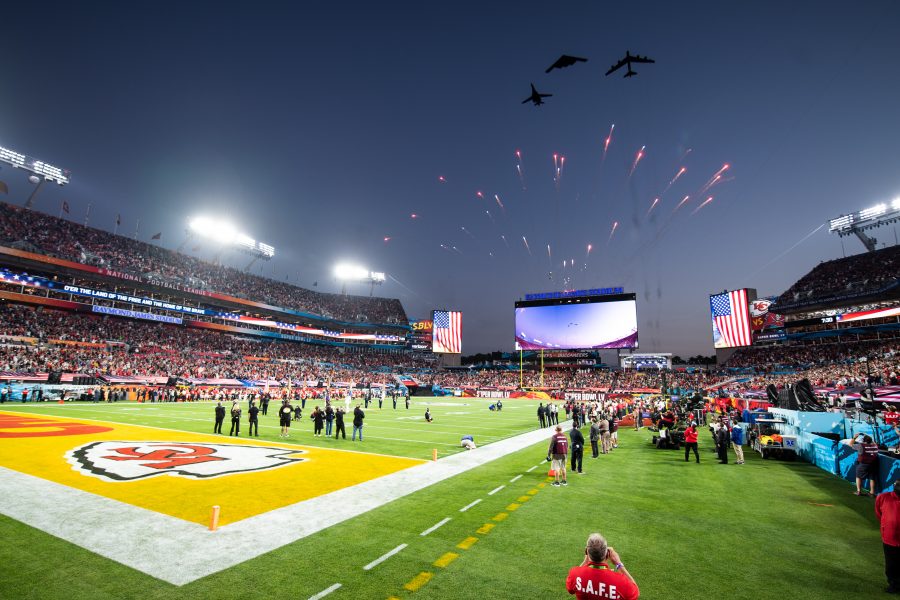The formation flyover of the Super Bowl by the Air Force’s three bomber types on Feb. 7 is a signal of things to come, said Air Force Global Strike Command.
A B-1B and B-52 flew interoperability sorties at Barksdale Air Force Base, La., several days before the big game, swapping aircrew and developing handoff techniques for employing standoff weapons. The two bombers flew one joint sortie, and several others as single-ships, in which a B-52 pilot flew aboard a B-1B and vice versa, while weapon systems officers also switched platforms, to get a feel for how the other type of aircraft is employed, AFGSC said in a press release.
The B-52 crewmembers were able to see the B-1’s radar and connectivity in action; a preview for them, as new radars and datalinks are coming to the B-52 in the next few years.
The 337th and 49th Test and Evaluation Squadrons, which conduct tests on the B-1 and B-52, respectively, flew the missions in the “Lancer” practice area west of Dallas, Texas.
One focus of the Feb. 3-6 flights was to develop handoff techniques for the stealthy AGM-158 Joint Air-to-Surface Standoff Missile, an AFGSC spokeswoman said.
The flights were “the first in a series of B-1 and B-52 interoperability sorties, as the bomber operational test community explores tactics development for a more agile bomber strike force that leverages the strengths of the different platforms,” AFGSC said.
The exercise explored and verified “integrated tactics” to give combatant commanders “the option and flexibility to employ the B-1 and B-52 as an integrated and synergistic long-range weapon force package.”
The interoperability push is on a “crawl, walk, run” continuum, the AFGSC spokeswoman said, “and we’re very much at the ‘crawl’ stage now.” However, more such experiments are expected to be conducted in the next three months to hone the techniques and procedures explored in this series of flights, she said.
The B-1 bests the B-52 in speed, signature, and payload, but the B-52 can carry a more diverse array of weapons.
“A goal of these tests was to fly in formation to do practice standoff weapon sorties so we can start building how we fly together, pass targets if we get new ones, and how we ultimately work together,” said Maj. Joseph Wilkinson, a B-1 Weapon System Officer and instructor with the 337th TES.
AFGSC commander Gen. Timothy M. Ray expects to sharply increase the number of B-1s and B-52s employed in testing, so the command can more rapidly integrate new weapons, such as the hypersonic AGM-183 Air-Launched Rapid Response Weapon, and explore new tactics for the bomber fleet. While the test community normally has two each of the bombers, Ray has said as many as eight aircraft of each type will be dedicated to testing new weapons, as well as upgrades to the B-52’s engines, radar, connectivity, and other systems.
The 49th and 337th TE Squadrons are Air Combat Command units, but are part of the 53rd Test Management Group, which oversees testing of all bomber and intelligence, surveillance, and reconnaissance platforms.
